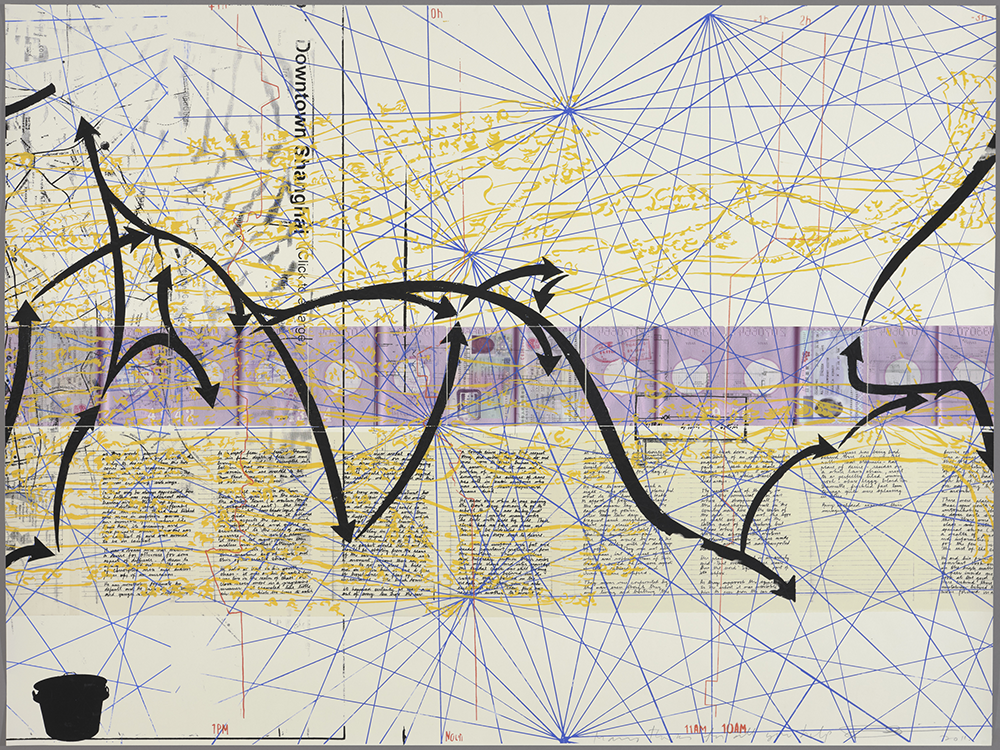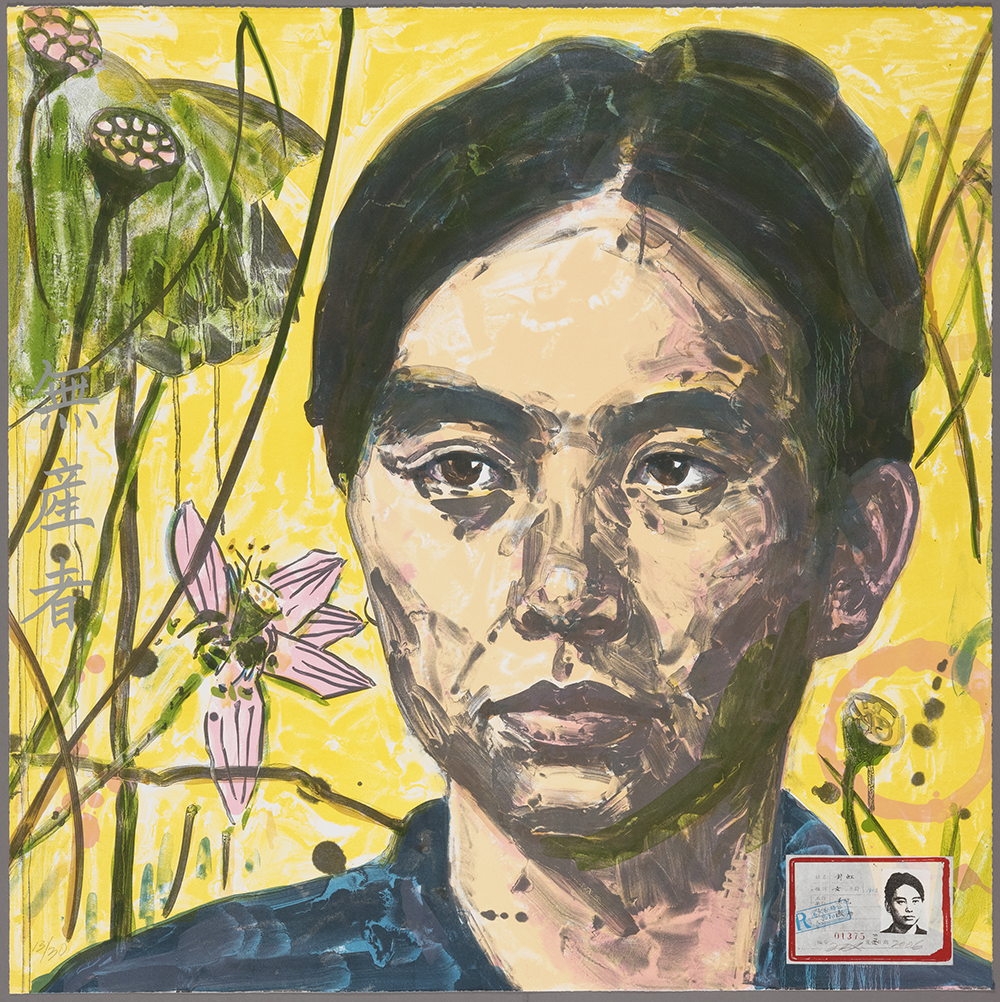At the entrance to “Global Asias: Contemporary Asian and Asian American Art from the Collection of Jordan D. Schnizter and His Family Foundation” at the USC Pacific Asia Museum, stand two giant ceramic heads. One features a black-and-white striped neck, red crown and blue face turned sideways to face the other, which is faceless and mysterious, reflecting the puzzling exhibition title. Curator Chang Tan, born in Chan and now teaching Art History and Asian Studies at Penn State, examines Asian identity in this exhibition of works by 15 Asian and Asian American artists; she contends that Asia is as diverse as it is fluid.
In the first section, “Exuberant Forms,” includes vibrant, abstract works. Dinh Q. Le’s large woven photograph, Untitled (Coca Cola) (2007) is a collage of American brand logos like Coca Cola, SPAM, Oreos and a soldier aiming a bazooka. Hiroki Morinoue’s woodcut Pure Water (2001), and Barbara Takenaga’s stenciled lithographs Wheel (Zozma) (2008), are exuberant works of abstract patterning, while the grid of pop-style woodblock prints of Jacob Hashimoto’s The Hashimoto Index (2017) could be from anywhere.
In “Asias Reinvented,” figural works, often featuring Asian motifs, signal the artists’ roots. In Crossing the River: Chasing (2003), Hung Liu, an American artist born in China, draws from the Chinese “Three Perfections” with painting, calligraphy and poetry. A boy chasing a white bird through a river is flanked by lotuses and a poetic inscription in Chinese calligraphy. The work of superstar artist Takashi Murakami references not only Japanese manga and anime, but also Buddhist and Daoist concepts of impermanence, as in Of Chinese Lions, Peonies, Skulls and Fountains (2002).

Rirkrit Tiravanija, Untitled, 2011. Collection of Jordan D. Schnitzer. Courtesy of the University of Southern California, Pacific Asian Museum. Photo: Aaron Wessling.
The final section, “Moving Stories,” delves into societal issues within the “global Asian” experience. Rirkrit Tiravanija’s monumental handscrolls, Untitled 2008–2011 (the map of the land of feeling), I (2008–11), include copies of the Thai artist’s passports, city maps, mazes, time zones and recipes in a powerful self-portrait of his nomadic life. In Roger Shimomura’s bold three-panel painting, American Infamy #5 (2006), American soldiers in the watchtower of an internment camp look down on the Japanese Americans imprisoned below. Shimomura himself spent his early years in an internment camp in Idaho. Later, as an artist, he drew on the work of pop artists such as Andy Warhol and Japanese artistic traditions to illustrate this shameful historical moment.
A third of the world’s land area and more than 60% of its population, Asia comprises many cultures, including the Asian diasporas. Although large areas of it are not represented in the exhibition (or in the Schnitzer Collection), “Global Asias” still conveys the important message that neither Asia nor Asian art is homogenous. With the anti-Asian sentiment currently prevalent in the US, the many voices of global Asians need to be heard, and this dynamic, thoughtful exhibition should be seen.


